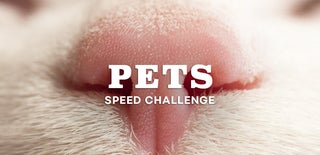Introduction: Puppy Pee Pad
Next weekend, a cute little addition to the family will arrive. We weren't intending on buying a puppy, but due to lockdown it's difficult to adopt a rescue. When we heard that a friend of a friend was struggling to find owners for her puppies, we thought it was too good an opportunity to miss.
We already have one dog, but we inherited her. The best bit about this is that she arrived already toilet trained. Puppies... not so much.
We do have a back garden, but it's down a good sized stairset, which the puppy will not manage for quite a while. In the meantime, to get her toilet trained and used to peeing on grass, we decided to build a puppy toilet, right outside the back door. We bought some realistic astroturf from Amazon, and used old bits of wood and some sand to build it. To build your own, follow this instructable!
Note on Longevity:
As we do have a garden, this pee pad is only temporary. The materials used are mostly scavenged from inside my garage and will not last more than 6 months outside in the rain, being peed on. If you intend on building a permanent version, perhaps on a balcony for example, I will add a note on the bottom of each step with suggestions for better materials to use.
Supplies
- Astroturf
- Wood
- Sand
- Screws + Staples
- A big sister doggo to test it
And for the bonus round:
- Gripper tape
Step 1: Cutting to Size
The astroturf we purchased came as a strip 1ft by 1m (30cm x 3.3ft). To make it a bit more square, I chopped it in half. The two bits side by side gave me the dimensions of wood required.
The wood I used was simple chipboard (see note!), which had been sitting in the garage for many years.
The design of the pee pad is pretty simple. It has a layer of fake grass, then a layer of sand to let the pee soak away, then a layer of wood to support it all. There is also a wooden outer edge around the sand, which stops the sand falling out and gives us something to properly attach the turf to.
Once you have your wood, chop it to size and chop some simple batons for the side.
Longevity Note:
Chipboard does not last well outside. It will expand, the glue will wash off, and it will fall to pieces. Use something like outdoor-rated plywood or OSB.
Step 2: Assemble the Wooden Section
As shown in the pictures, screw the "walls" to the floor. Remember to leave gaps for drainage!
Longevity Note:
Remember to use screws that will stand up to the weather. Stainless steel would be the best, but plenty of cheaper options are out there.
Step 3: Add the Sand
Before adding the sand, put some pebbles in the drainage gaps. Without this, the sand itself will also drain out.
Then pour in the sand. It's better to put in too much sand and create a small mound. This covers and of the internal wooden corners and lets liquids drain better.
Note that I've also placed some small paving slabs underneath the pad, this is just to raise it up for easier access from the doorstep.
Longevity Note:
Over time, the sand is likely to slowly leak out the drainage gaps, even with the pebbles there. If this is a permanent pee pad, it may be worth using a mesh, or fabric of some sort, to reduce the spillage.
Step 4: Staple the Astroturf
The best way to attach the astroturf is by using staples. If you have plier stapler, use this to stitch the two sheets of turf together.
Use a normal staple gun to staple the astroturf to the wooden edge. To ensure it goes in as far as possible, pull the grass apart and stick the staple straight into the base layer. This prevents catching any of the grass, which then hides the staple effectively.
Put in as many staples as you think you need (tip - it's more than 1). Make sure none of them stick up in a way which might hurt your puppy's toe beans!
Note that some astroturfs are waterproof - if so, put lots of holes in the base layer.
Longevity Note:
Use rust-proof staples. Maybe put more in than normal too, and check occasionally for loose ones.
If you need to stitch two sheets together, perhaps actually sew them together with string.
Step 5: Test It!
Get the big sister doggo to test the puppy pad. Unless she speaks human, she'll look at you wondering what on earth it's for.
Little does she know it, but she's got 6 more days of peace before she has a hyperactive playmate to deal with. She'll love her.
I'll update this with puppy pics next week!
Step 6: Bonus Round!
The bonus part of this project was to help the puppy get outside and to the toilet quickly. The existing uPVC step is pretty slippy. Big sister doggo manages it, but she usually just leaps the entire thing. Puppy won't have that luxury, so I purchased some clear griptape from Amazon.
Application is simple, just ensure the surface is clean and carefully stick the tape down.

Participated in the
Pets Speed Challenge











